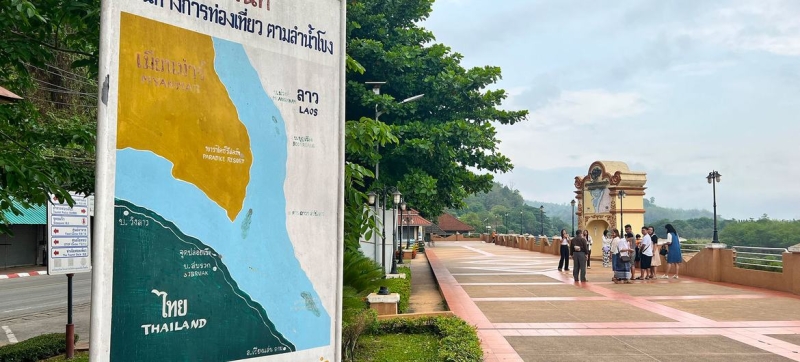- US Issues Travel Alert for Bangladesh Ahead of Election |
- Air ambulance carrying bullet-hit Hadi flies for Singapore |
- Can Dhaka’s arms recovery drive ensure peaceful polls? |
- ‘Unhealthy’ air quality recorded in Dhaka Monday morning |
- BD peacekeepers' deaths: UN chief calls Dr. Yunus, offers condolence |
Golden Triangle Sees Sharp Rise in Synthetic Drug Trade

Organised crime gangs operate in the Golden Triangle—where Myanmar, Thailand, and Laos meet. UN News/Daniel Dickinson
The Golden Triangle—a remote, jungle-clad border zone where Myanmar, Thailand, and Laos converge—has witnessed an alarming surge in synthetic drug production and trafficking, the UN Office on Drugs and Crime (UNODC) reports.
Methamphetamine production, especially in Myanmar’s conflict-ridden Shan State, has expanded “exponentially” since 2021.
“The scale of production and the flow of trafficking have significantly increased,” said UNODC officials.
Record-breaking seizures
In 2024, East and Southeast Asia saw a record seizure of 236 tons of methamphetamine—a 24% increase from 2023.
“And that’s just what was caught,” noted Benedikt Hofmann of UNODC, calling the scale “unprecedented.”
Thailand alone seized a staggering one billion meth tablets, accounting for the bulk of seizures in the region, which represents 85% of global totals.
Conflict fuels production
Shan State remains the primary production zone, where Myanmar’s internal conflict, involving multiple armed factions, has weakened state control.
This instability—combined with pockets of relative calm—has created ideal conditions for organised crime to thrive.
“The ongoing crisis in Myanmar is driving the demand for drug trade profits,” Hofmann explained.
New and growing routes
Traffickers are increasingly shifting routes to bypass law enforcement. One of the fastest-growing corridors now runs from Myanmar’s Shan State through Laos into Cambodia.
In 2024, Cambodia reported a record seizure of nearly 10 tons of methamphetamine—the country’s largest ever.
“The Cambodia-Myanmar route has expanded rapidly,” said UNODC analyst Inshik Sim, who also flagged growing trafficking through Malaysia, Indonesia, and the Philippines.
The rise in synthetic drug production and trafficking poses a grave threat to public health, security, and stability across the region and beyond.

